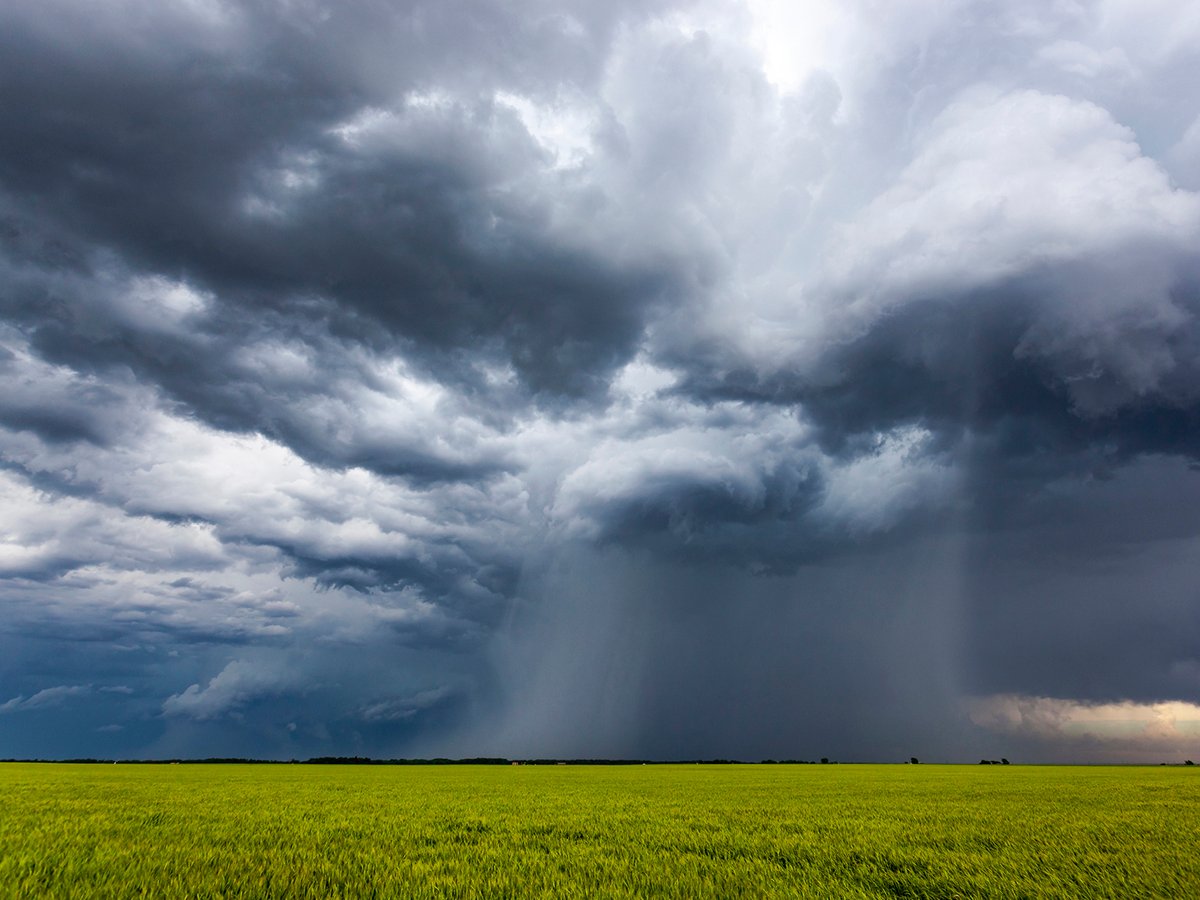Lower timothy prices should not deter farmers from growing the crop, said hay buyer Albert Van Genderen of Lethbridge.
The president of NAFTAC Commodities estimated that last year’s prices were likely at their lowest.
“I hope it doesn’t go any lower or timothy will lose its glory,” said Van Genderen, interviewed during the Canadian Hay Association conference. Prices fell to $170 to $190 a tonne last year from the $230 to $300 a tonne for timothy in the field in 2002.
Van Genderen said Saskatchewan has two hay compression plants running at one-third to one-half capacity that could benefit from two to three times more timothy production for export markets.
Read Also

Extreme rain increases as planet warms
In this issue, we are going to wrap up our look at extreme rainfall by examining the different weather patterns that tend to be associated with these rainfall events.
Timothy acreage in Alberta and Manitoba is adequate, Van Genderen said.
A stronger Canadian dollar in the last year is blamed for lower prices. Australia, which is a key competitor, has also seen softer prices because of currency appreciation. Good crops in Australia again this year could lead to a carryover of supply there.
Van Genderen struck an optimistic chord, noting prices had dropped by just five percent in Japan. He pointed to emerging markets in China where there is development work under way to increase the dairy herd. That would increase the need for feed.
He noted Canadian hay continues to be regarded as a high quality, palatable product.
Colour and grade are major factors for buyers, but the Japanese increasingly want analyses to help them decide on a load.
Van Genderen encouraged growers to maintain market access by providing a clean safe product, grown using best management practices with trace-backs to the point of origin.
Van Genderen said more work in packing could pay big dividends.
“Everything that looks good will sell,” he said.
In a workshop on growing timothy, Alberta Agriculture processed forage specialist Tracy Dow discussed the attributes buyers want. They include a leafy product with good green colour and minimum brown leaf content.
Bales need to be free of mould, soil, quack grass, rye, wheat grass, barley and foxtail.
Dow said herbicides are only marginally successful in controlling weeds in timothy, so it pays to start weed control well before the crop is planted and maintain healthy stands.
Except for grasshoppers in young stands, insects are rarely a problem.
Dow said food safety has become a critical focus for the Japanese and the laws for feed safety have been amended.
“Feeds going into Japan are under scrutiny,” he said.
He listed 45 toxic items identified by government, including 37 insecticides and fungicides, three herbicides, four heavy metal residues and Aflatoxin B1.
Farmers have to know the history of their fields and manage chemicals to avoid unacceptable levels of chemical residues. That includes following label directions, using only chemicals registered for timothy and paying attention to the rate and timing of application.
“Misuse and abuse of pesticides could jeopardize the export forage industry,” said Dow.
Peace River, Alta. buyer, processor and grower Marc Lavoie said the Japanese will dissect a bale during inspections and refuse loads contaminated with mole hill dirt or chemical residues.
“They’re expecting to get what they paid for,” Lavoie said, noting farmers want quality feed for their dairy herds.
“They treat them the same way we treat our animals.”
In a session on timothy buying, he and B.J. Boot of Broderick, Sask., explained the importance of storage sheds and tarps for timothy. Bale prices are docked for wet bottoms or bleached colours so that should be scraped off.
“Leaks can ruin a lot of bales,” Boot said.
Hay must be at around 12 percent moisture to ensure the best storage conditions. Bales should also be uniform in size and properly secured with twine, said Lavoie.
Compressed alfalfa has met with limited marketing success, said Boot, noting most overseas markets are satisfied with the supply from Washington and instead turn to Canada for its timothy.














